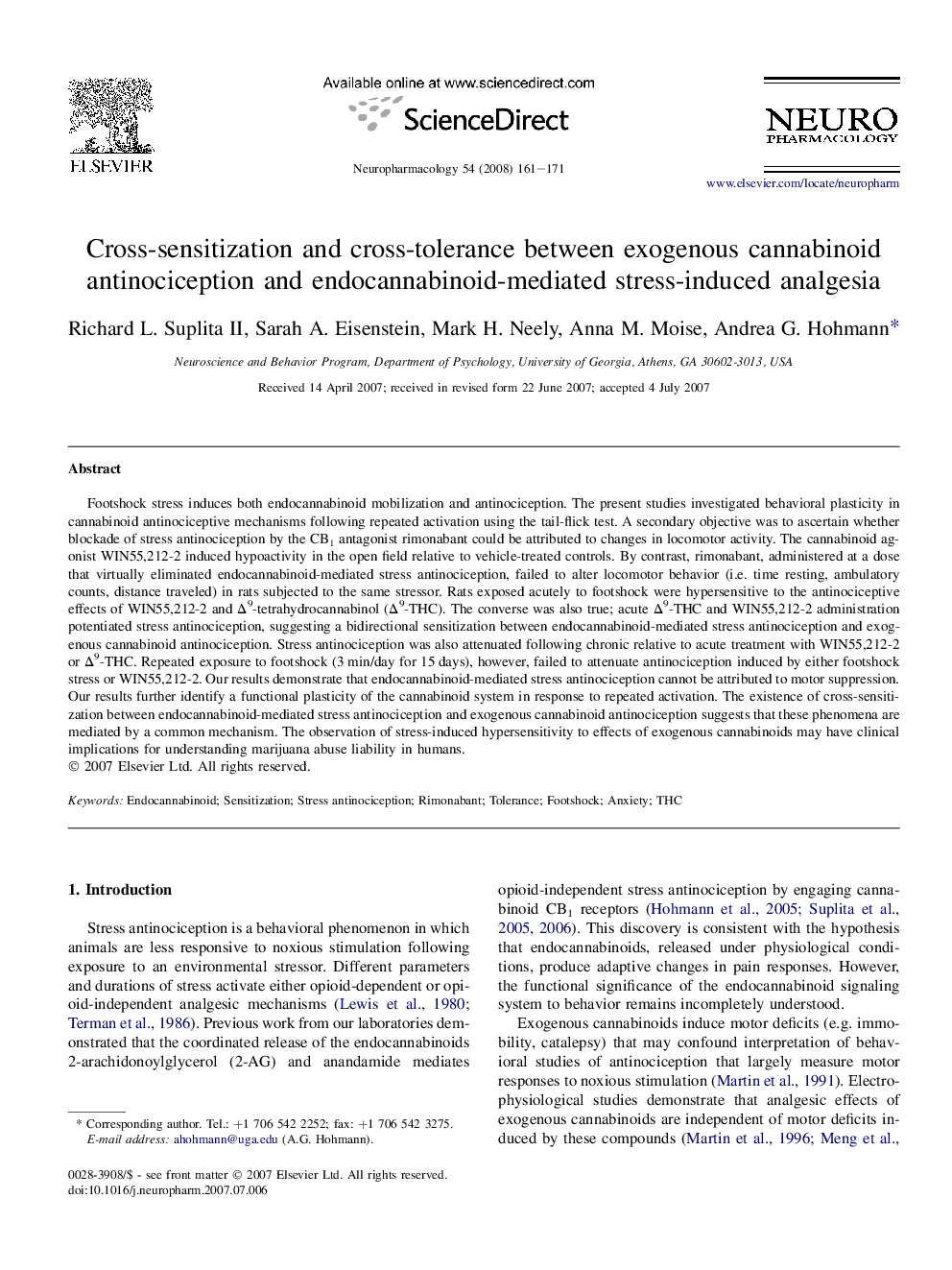| کد مقاله | کد نشریه | سال انتشار | مقاله انگلیسی | نسخه تمام متن |
|---|---|---|---|---|
| 5816261 | 1115595 | 2008 | 11 صفحه PDF | دانلود رایگان |
عنوان انگلیسی مقاله ISI
Cross-sensitization and cross-tolerance between exogenous cannabinoid antinociception and endocannabinoid-mediated stress-induced analgesia
دانلود مقاله + سفارش ترجمه
دانلود مقاله ISI انگلیسی
رایگان برای ایرانیان
کلمات کلیدی
موضوعات مرتبط
علوم زیستی و بیوفناوری
علم عصب شناسی
علوم اعصاب رفتاری
پیش نمایش صفحه اول مقاله

چکیده انگلیسی
Footshock stress induces both endocannabinoid mobilization and antinociception. The present studies investigated behavioral plasticity in cannabinoid antinociceptive mechanisms following repeated activation using the tail-flick test. A secondary objective was to ascertain whether blockade of stress antinociception by the CB1 antagonist rimonabant could be attributed to changes in locomotor activity. The cannabinoid agonist WIN55,212-2 induced hypoactivity in the open field relative to vehicle-treated controls. By contrast, rimonabant, administered at a dose that virtually eliminated endocannabinoid-mediated stress antinociception, failed to alter locomotor behavior (i.e. time resting, ambulatory counts, distance traveled) in rats subjected to the same stressor. Rats exposed acutely to footshock were hypersensitive to the antinociceptive effects of WIN55,212-2 and Î9-tetrahydrocannabinol (Î9-THC). The converse was also true; acute Î9-THC and WIN55,212-2 administration potentiated stress antinociception, suggesting a bidirectional sensitization between endocannabinoid-mediated stress antinociception and exogenous cannabinoid antinociception. Stress antinociception was also attenuated following chronic relative to acute treatment with WIN55,212-2 or Î9-THC. Repeated exposure to footshock (3Â min/day for 15Â days), however, failed to attenuate antinociception induced by either footshock stress or WIN55,212-2. Our results demonstrate that endocannabinoid-mediated stress antinociception cannot be attributed to motor suppression. Our results further identify a functional plasticity of the cannabinoid system in response to repeated activation. The existence of cross-sensitization between endocannabinoid-mediated stress antinociception and exogenous cannabinoid antinociception suggests that these phenomena are mediated by a common mechanism. The observation of stress-induced hypersensitivity to effects of exogenous cannabinoids may have clinical implications for understanding marijuana abuse liability in humans.
ناشر
Database: Elsevier - ScienceDirect (ساینس دایرکت)
Journal: Neuropharmacology - Volume 54, Issue 1, January 2008, Pages 161-171
Journal: Neuropharmacology - Volume 54, Issue 1, January 2008, Pages 161-171
نویسندگان
Richard L. II, Sarah A. Eisenstein, Mark H. Neely, Anna M. Moise, Andrea G. Hohmann,